► New 992-gen Porsche 911 GT3 RS driven
► Tested on track at Silverstone GP circuit
► Watch the video, here
When CAR magazine first drove the current 992-generation 911 GT3 in prototype form in 2020 with Porsche’s director of GT cars Andreas Preuninger, he described how his team is challenged to find ways of ‘upping the ante’ with each new GT3. Consequently every new iteration of the regular-series 911 GT3 becomes a bit more ‘RS-ish.’
Couldn’t help but wonder: how on Earth will they up the ante when it comes to the new 2022 Porsche 911 GT3 RS version? After all, the regular – if that’s the right word – GT3 is about as sharp as cars come. And Preuninger and his team don’t wish to achieve more speed simply by piling on more horsepower. That’s not what the GT3 is about, and turbocharging is very much off the menu.
Here’s the new 992-gen 911 GT3 RS, and here’s the answer. One glance is enough to tell you this car is all about aerodynamics. And it’s… wild. Consider the ante not so much upped as rocketed into orbit!
The wildest spoilers and aero: a gallery of excess
What’s clever about the 992 GT3 RS aerodynamics?
The rest of this story’s word count and more could easily be spent detailing this car’s aero trickery.
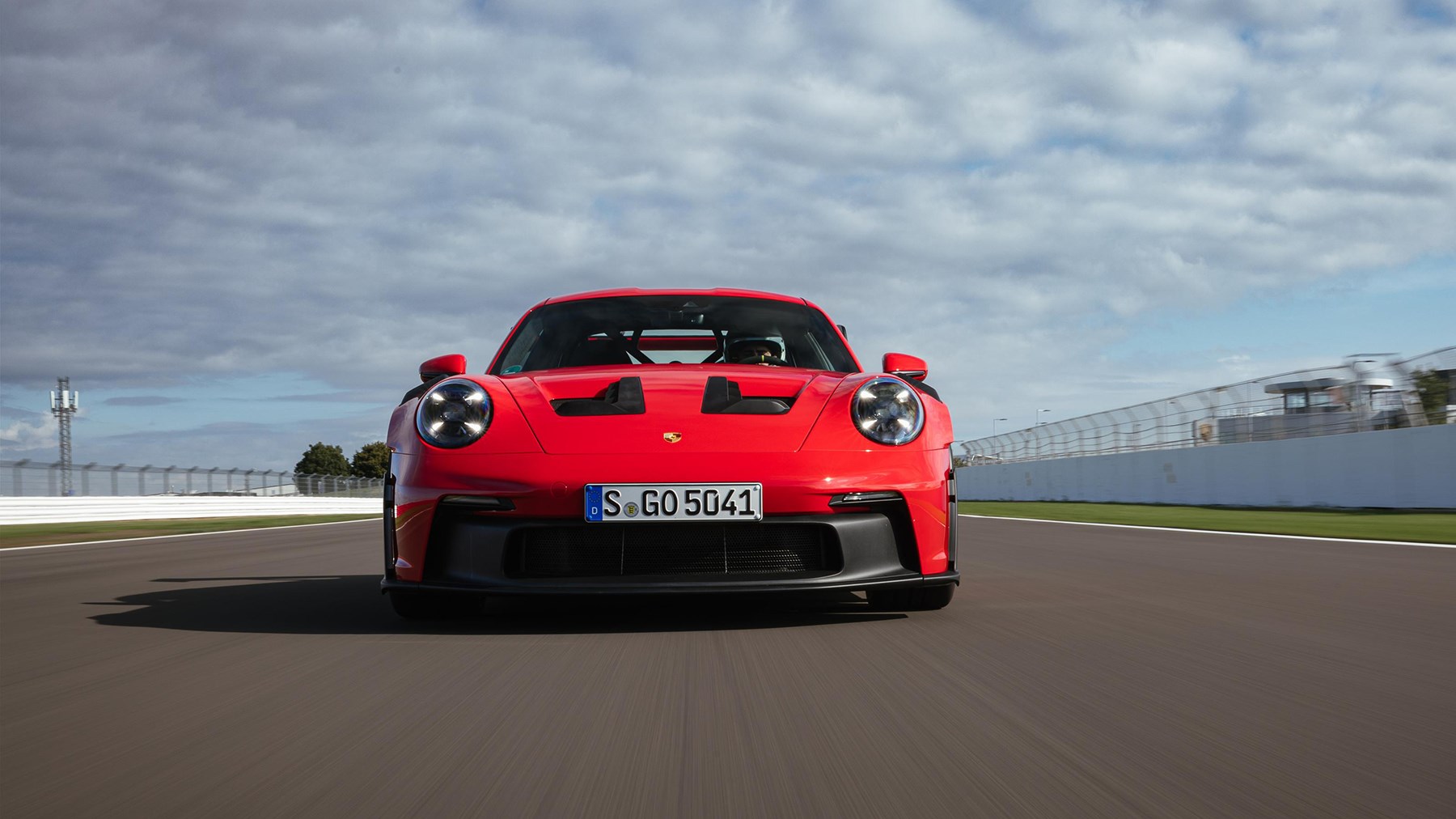
Its bodywork looks outlandish but none of it’s for show and all of the fins and flicks have a purpose. At top speed, 184mph, total downforce is 860kg, according to Porsche.
Here is a spotter’s guide to the clever aero on the 992-generation Porsche 911 GT3 RS:
Single radiator, two front aerofoils
Starting at the front, Porsche has given the 911 GT3 RS one big single radiator in place of a regular 911’s three smaller ones (to make space for the front boot). In the RS, there is no boot. The luggage space is taken up by the radiator, angled at 43 degrees to the horizontal – an angle which Porsche’s race team has learned is the optimum for flow. The advantage of going to a single radiator format is that it creates space either side, below the headlights, for two front wings. They’re motorised and completely active, with a big range of movement, directing air through the channelled front wheelarches. They work in synchronisation with the rear wing – which is active too – to balance aerodynamic loads front and rear.
(Incidentally, that one big radiator is smaller in total than the three rads on the regular GT3 but the RS’s cooling demands are even greater, so Porsche’s engineers have had to work hard to optimise its flow.)

Rear wing (above)
No missing it. It’s actually slightly higher than the roofline, a first for a Porsche road car. It’s a two-element wing and its upper part is the active bit, controlled by big actuators, easily visible at a glance. They tilt the surface from low-drag-almost-flat to barn-door airbrake. The lowest-drag setting can be manually toggled from the steering wheel with an F1-style DRS switch too, or automatically in the right conditions in Track mode.
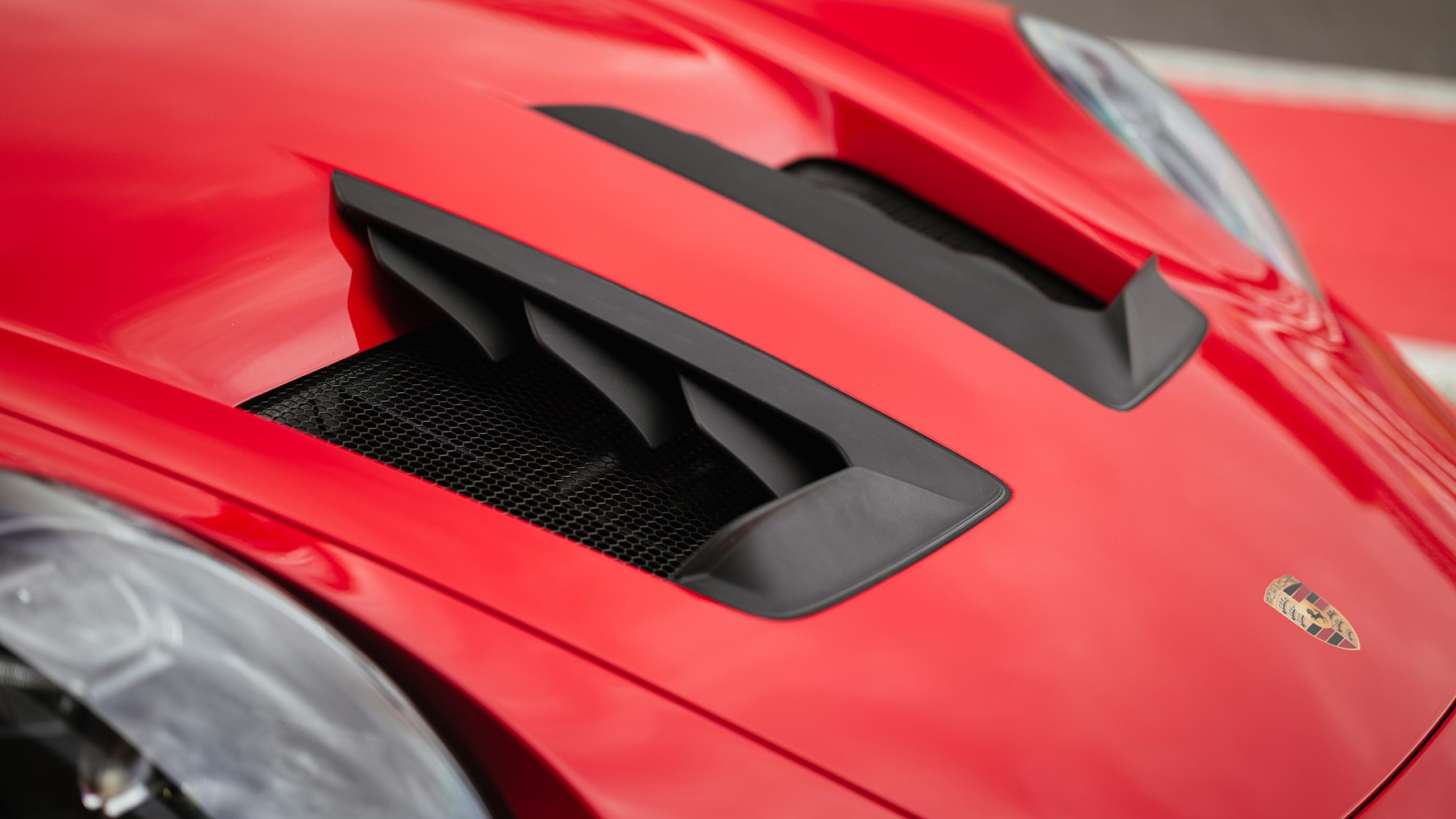
Bonnet and roof blades
Air passing through the front radiator flows through an S-duct shape and out of the big nostrils in the bonnet. The extra fins ridged along the nostrils’ edges are there to direct the hot air from the radiator out to the edges of the car. The blades on the roof have the same purpose. That’s all to ensure that the air flowing into the engine intakes at the tail is cooler, the better for power. Naturally, the air coming out of the radiator is warm, which is bad for power. If the airflow going into the engine were 10degC higher, the engine would lose 15bhp. So the purpose of those eye-catching fins on roof and bonnet is not for downforce but purely to redirect the warm air flowing from the rad and keep it away from the tail intakes.
Underbody
The underside of the GT3 RS is fully panelled, also a first for a road-going 911. It features directional fins too, to tidy up the airflow.
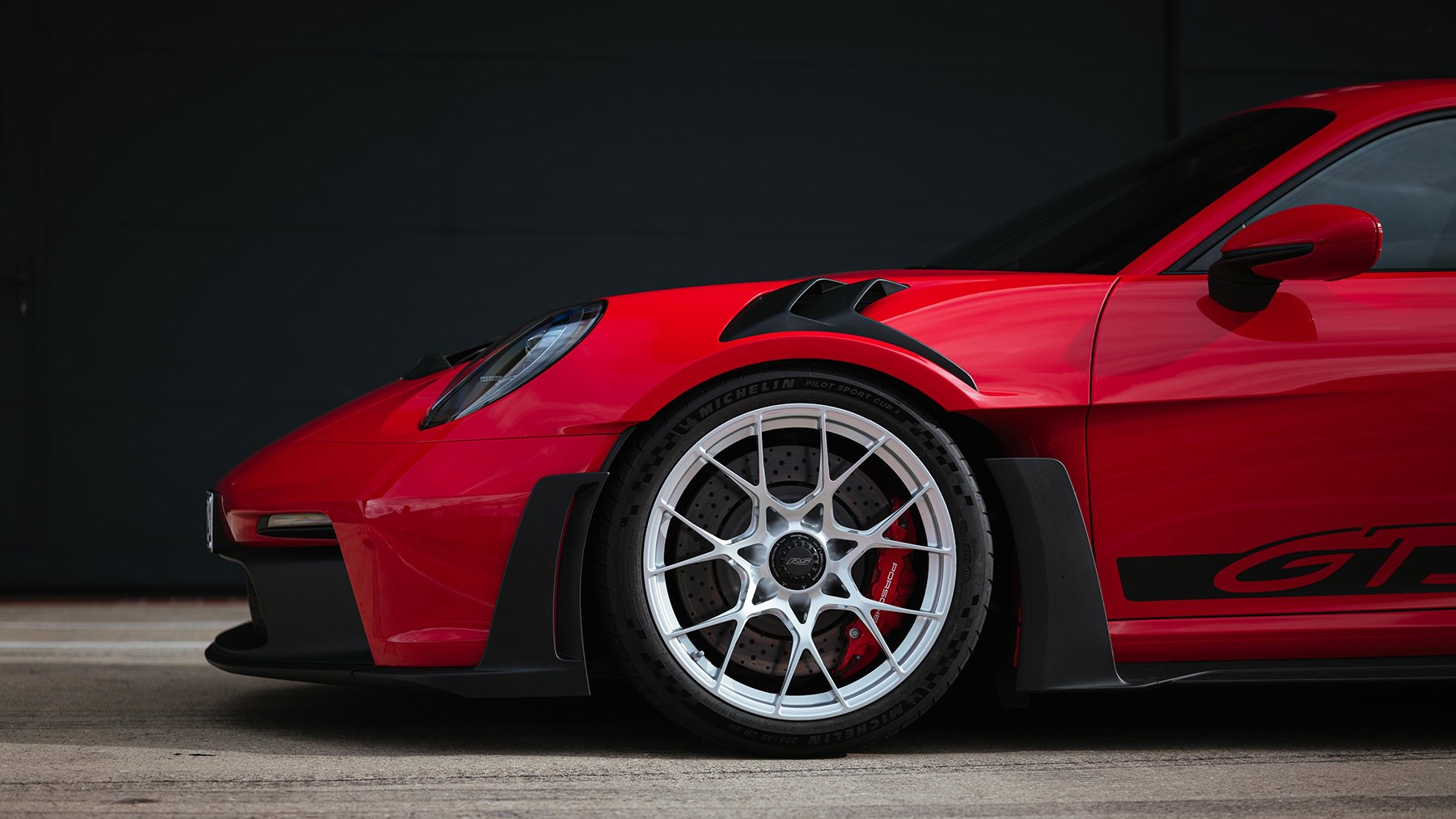
Doors and suspension
Even the doors are a different shape, the better to extract air from the front wheel wells, and even the front suspension’s wishbones are aerodynamic, shaped like teardrops. They’re claimed to contribute as much as 40kg of downforce over the front axle at top speed. The doors are made from carbonfibre.
The best sports cars on sale today
What does this car feel like to drive?
We sit in the GT3 RS for the first time in the pitlane at Silverstone. First media drives are on track only, to fully get to grips with its performance, and the high-downforce, low air-temp conditions of Silverstone’s Grand Prix layout are a perfect habitat for this car. This being Northamptonshire in autumn, it’s also patchily damp. Gulp.
With that in mind, the tyres rolling down the pitlane beneath us are relatively deeply treaded Michelin Cup 2s rather than the semi-slick Cup 2Rs also available for the RS. Over the speed limit stripe and hit the throttle: the revs rise smoothly and there’s that trademark GT3 howl. Engine is still a 4.0-litre, naturally aspirated flat-six.
Rumours the RS might feature a variant of the 4.2-litre engine found in Porsche’s international GT racing 911s were unfounded; that can’t burn cleanly enough to be suitable for emissions legislations. So it’s the 4.0-litre engine, still with the spine-tingling 9000rpm redline, and now with around 15bhp extra thanks partly to hotter cams. There’s a different cylinder head too, for better lubrication under high G-forces in cornering brought about by all that downforce.
And you really feel that aerodynamic grip. It’s not a placebo effect: there’s a professional instructor/pathfinder ahead of me in a regular 911 GT3 and his car is skittering, twitching through the fearsomely fast sweepers that open the lap while the RS is planted. But it’s still immensely involving. It’s not a case of all-grip, no fun.
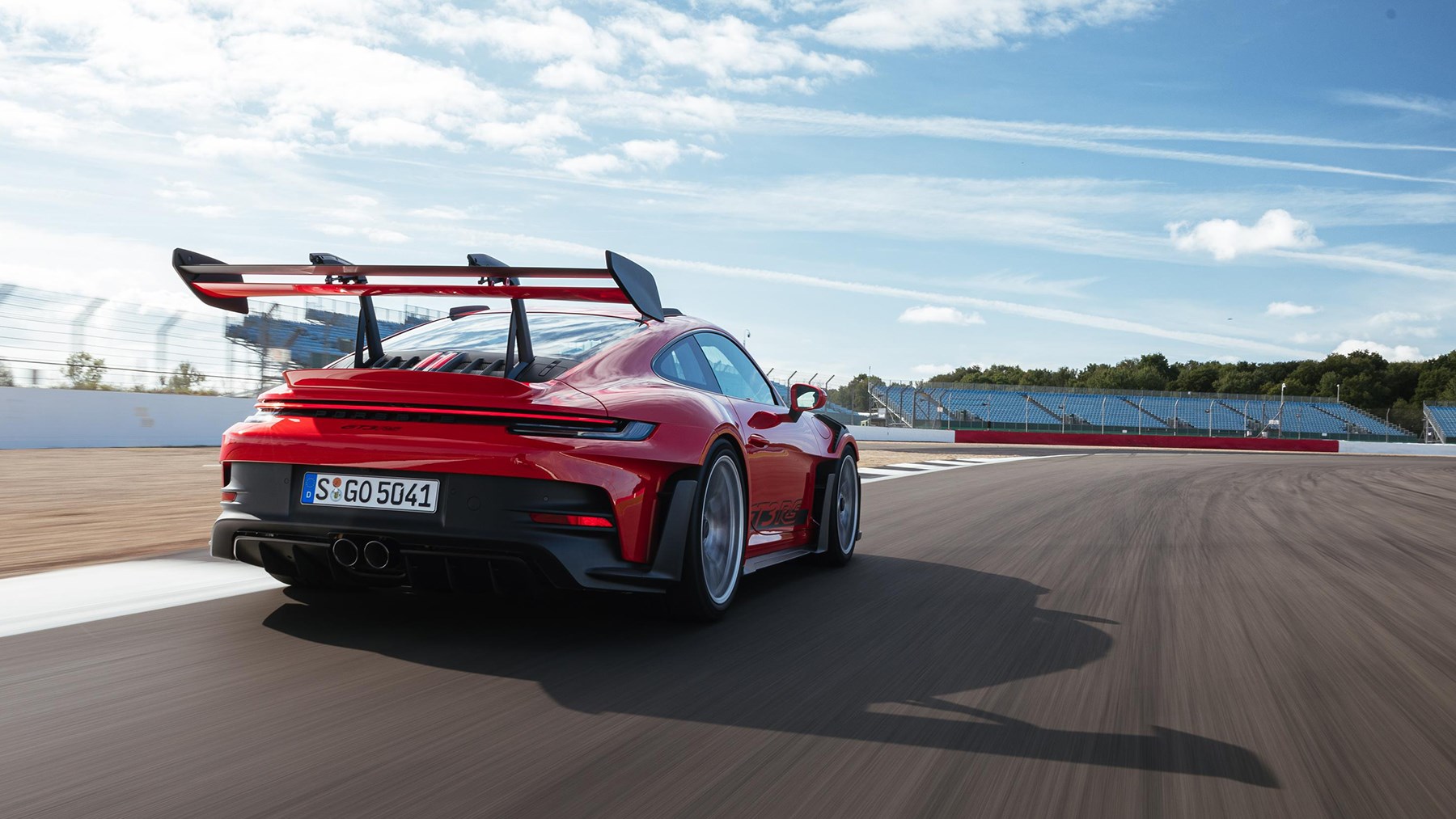
The steering feel is even more communicative than the regular GT3; the moment the front tyres begin to understeer on some of Silverstone’s banana-skin entry zones, you feel exactly what’s going on in absolute detail. And when the back of the car lets go in the quick bits at speeds that ought to raise hairs on the back of your neck, you feel that with absolute clarity too through the seat of your pants and the bucket seat it’s sat in.
It’s in the slower corners, where the downforce falls away and you’re driving on mechanical grip rather than the wings and ducts, that you realise how much the downforce is helping you – and underlines there’s still a fundamentally sorted car beneath all the bodywork that handles beautifully.
What else is clever about the new 2022 Porsche 911 GT3 RS?
Active aero is not its only card to play. Along with the DRS button, there are four ‘satellite’ rotary switches on the steering wheel. Top right one is the familiar drive mode switch, clicking through Normal, Sport and Track; bottom-right is stability and traction control, with seven stages for the latter.
The other two are rather more rarefied, and indicative of just how far this car moves the goalposts for track-focused sports cars. Top left wheel is for the dampers: you can adjust compression and rebound in eight stages, front and rear while you’re driving. Normally you’d need to pit and spend time with a toolkit.
In these damp conditions, we’ve got the compression at its slackest, the better to find grip. Twist the wheel all the way to the firmest setting and there’s 20 per cent difference. Experimentally going fully firm on compression at the front, leaving the rears alone, results in an armful of understeer in the slowest, slipperiest corners. It makes a real difference. And yet Porsche’s engineers have worked hard to ensure the car doesn’t get dangerously unsettled even if you merrily twist all the dials to odd settings.
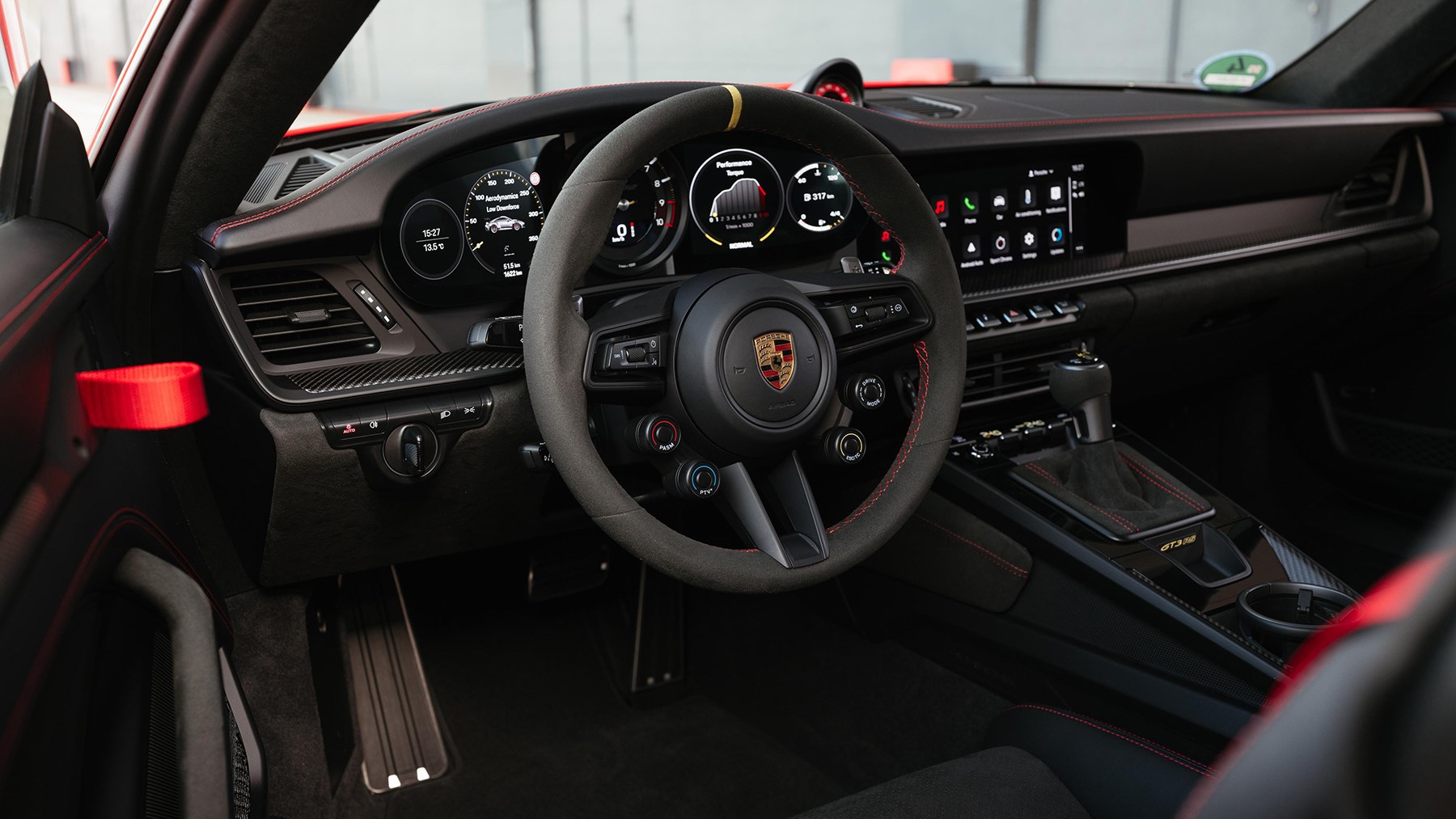
Final bottom-left dial is the sort of thing you’d expect to find in a serious, high-tech racing car: settings for the electronic differential, on both coasting and under power. For more turn-in agility but less stable rear-end grip, you can twist the wheel to the left to unlock the diff on the way into corners; for more stability but also more understeer, you can twist the wheel to the right. This is advanced stuff.
What you crave is a whole day with the car, experimenting with the settings and digging deeper into yourself to get the best from it. Just one more lap…
Porsche 911 GT3 RS review: verdict
Our time is up. This is surely the most extreme road-legal Porsche since Count Rossi asked the factory to strap numberplates to a 917K in 1974. Or perhaps since the homologation road cars for the 911 GT1 Le Mans challenger in the late ’90s. Except the GT3 RS would likely be a fair bit quicker. In fact, on road tyres it’s quicker than a modern 911 Cup racing car on slicks.
Yet the most remarkable thing about it is how approachable it is, despite its extremity. You sense that it could trickle to the shops and back and feel entirely at ease. (Even if there’s no boot to put the shopping in when you get there.) Weirdly, the fact this car’s six-figure sterling price begins with a ‘1’ is quite remarkable. The technology and content feels more in line with a car costing a quarter of a million pounds or more.
On the track, it’s mind-blowing. We’ll find out how that translates to the road soon. In the meantime, consider the ante not so much upped as in orbit. Where to from here?
Read more Porsche reviews